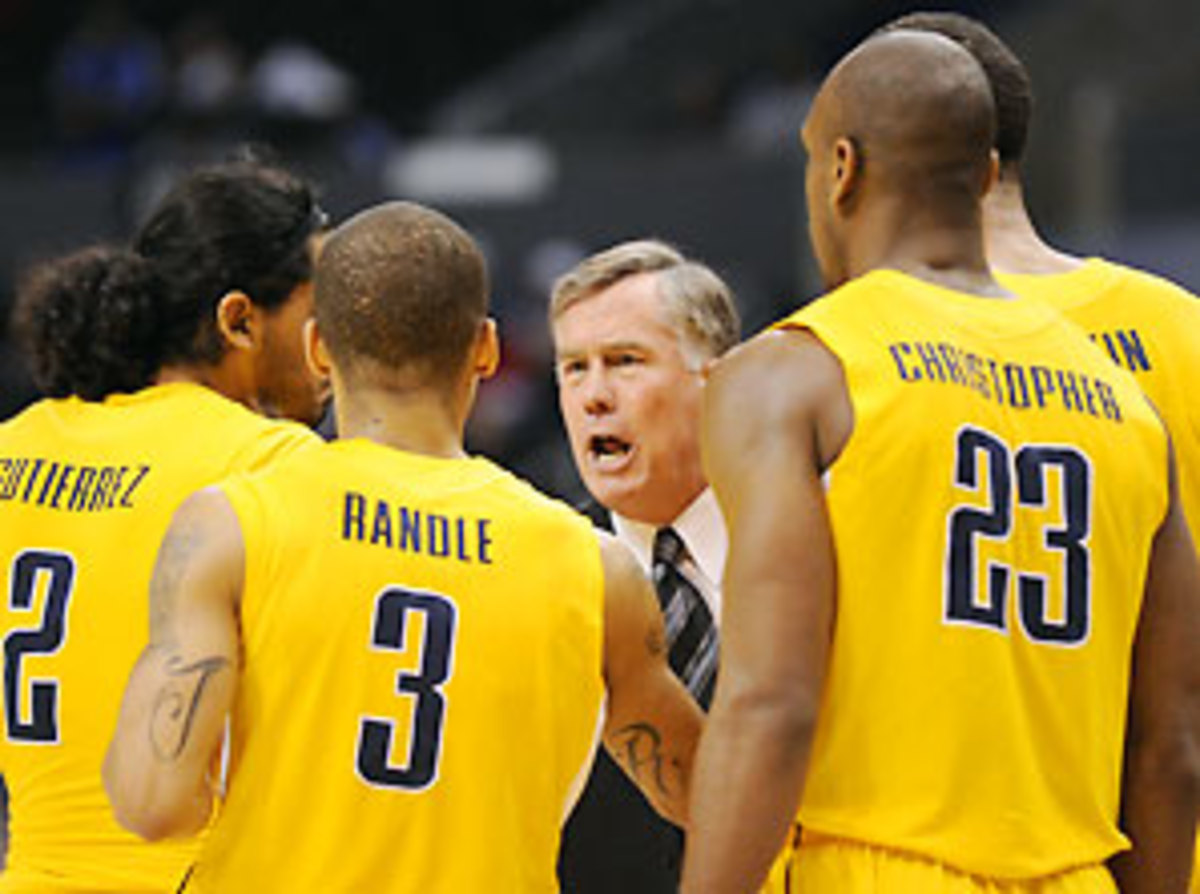Downtrodden Pac-10 seems bound for another lackluster season
Looking for signs of life in Pac-10 basketball? Good luck. A few months away from its final season as the 10-team entity we've known for years, the conference is dormant.
While new commissioner Larry Scott frantically pursued expansion -- driven by football and the big bucks that come with it -- the result is that Utah and Colorado are coming into the conference. Those additions don't make basketball fans excited, but -- hey -- it can't get much worse than it is right now.
Using all the accepted measuring sticks of success, Pac-10 hoops is suffering:
• Just one player, Washington's Quincy Pondexter, was drafted in the first round of last month's NBA draft. Only one other Pac-10 player -- Stanford's Landry Fields -- was taken.
• The conference had zero early entries into the draft (which may be a positive for individual teams heading into next season, but it doesn't reflect well on the conference's overall talent level).
• Just one McDonald's All-American was signed by a team in the conference in the last signing period (Josh Smith by UCLA).
• The conference suffered a very public rejection of the league's best team -- Washington -- by recruit Terrence Jones. Jones verbally committed to Lorenzo Romar at a press conference and then -- just a few weeks later -- officially signed with Kentucky.
All of this came on the heels of an NCAA postseason in which just two Pac-10 teams made the tournament.
"The league was not great last year," Cal coach Mike Montgomery conceded. "We didn't help ourselves."
Montgomery is something of a Pac-10 historian, thanks to his 18 years at Stanford and current position at Cal. His Bears won the league's regular-season title last season and lost in the second round of the NCAA tournament.
Montgomery faces a major rebuilding project, having lost seven players -- five to graduation, one to a dismissal (Omondi Amoke) and one to a transfer (D.J. Seeley).
"We knew when we got here that there was going to be a lot of turnover," he said.
Turnover has been the Achilles' heel of the Pac-10. It's not like the old days at Stanford, when Montgomery could take a look at his roster and recruit accordingly, filling in behind the starters for both need and depth, and safely predicting how long each player would stay.
Cycles are shortened to a year-by-year basis. The Pac-10 sent a record-tying six teams to the NCAA tournament in 2009, an accomplishment that once would have likely led to a good cycle of recruiting and a period of success.
Instead, the depth vanished. In back-to-back seasons, the conference sent 17 players to the NBA as early entries (and had 13 players -- more than any other conference -- taken in the first round of those drafts).
"Put them all back on their rosters and the league would be very, very strong," Montgomery said. "It's hard to fill in behind them. And players start leaving without notice."
For example, who would have expected UCLA's Jrue Holiday to take his 8.5 points and 3.7 assists per game and jump to the NBA after one year?
While the Pac-10's current lack of McDonald's All-Americans and NBA early entrants may be factors helping to determine the conference's sad-sack reputation, neither does anything to help stability. The McDonald All-Americans become the early entrants, shortening the cycle.
"There's clearly some credence to better players making better programs," Montgomery said. "But with the McDonald's All-Americans you're almost always looking at just one or two years and then they're going right into the draft. There aren't any seniors or juniors left and that perpetuates it. It's a tough cycle."
Not every college basketball team can be like Kentucky, reloading year after year. But Montgomery said that John Calipari has expressed that it's "like coaching an AAU team. A really talented AAU team, but very young."
And the cycle will continue at Kentucky. All those top recruits like Terrence Jones won't hang around long.
Another marker of the Pac-10's vulnerability is UCLA's precipitous drop. After making three straight Final Fours from 2006-08, the Bruins just came off their worst season since Ben Howland's first year.
"From a national perspective, if UCLA isn't great, people don't think the league is good," Montgomery said. "They've become our bell cow, as far as recognition."
In one bit of good news for the conference, UCLA announced David and TravisWear (who were McDonald's All-Americans coming out of Mater Dei High) are transferring from North Carolina. That should provide a boost for the Bruins in the 2011-12 season.
Washington, which made it to the Sweet 16 last season, could remain the cream of the conference in the coming season. The Huskies lost senior star Quincy Pondexter (who, like Brandon Roy before him, bucked the recent trend and played all four years at Washington), as well as reserve Elston Turner Jr. (who transferred to Texas A&M). Even without those two and Jones, Washington should be strong.
Don't expect the final season for Pac-10 basketball as we know it to be a glorious send-off.






